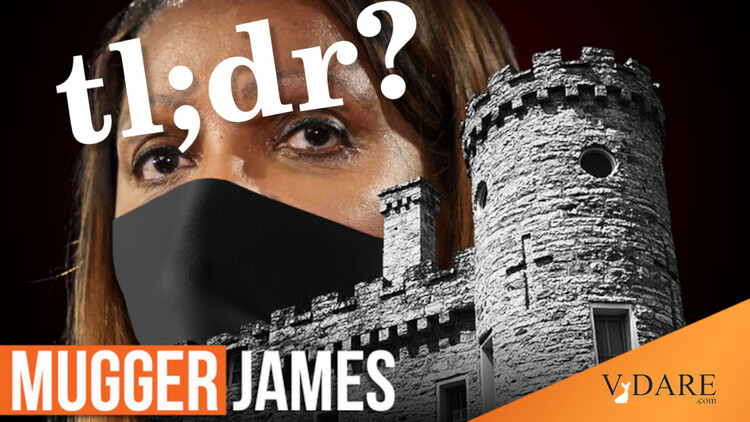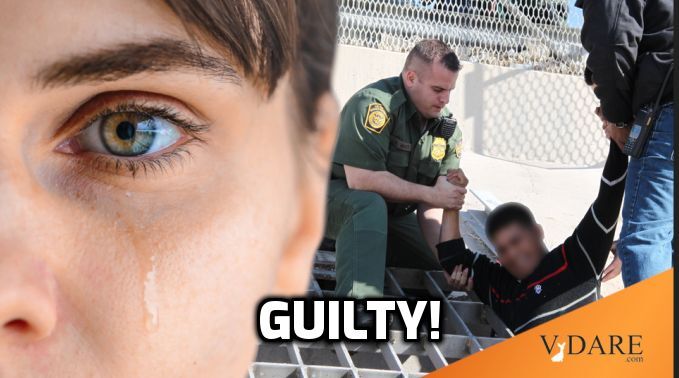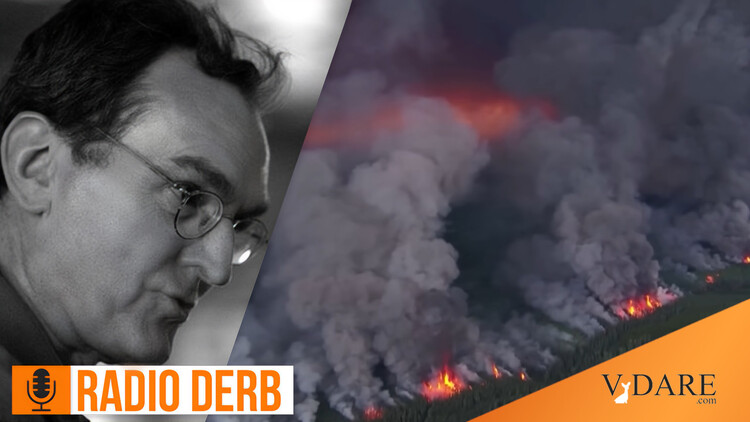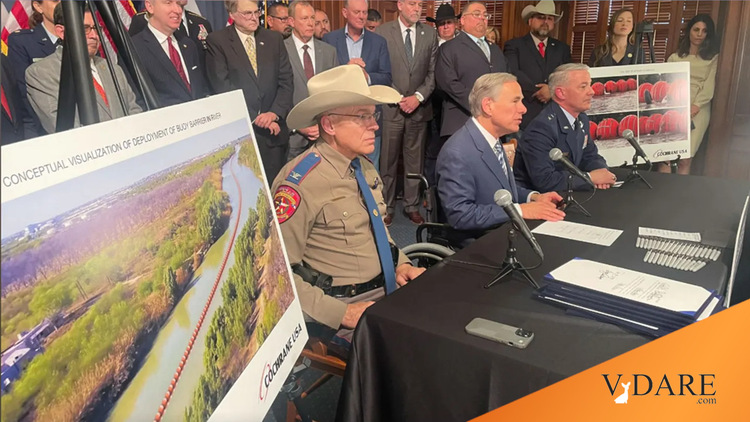In the New York Times opinion section, regular columnist Tom Edsall, a public-spirited old-timer, quietly drops some bombshells in a manner intended to bore sensitive subscribers into not noticing that Black Lives Matter has gotten more black lives murdered than saved. Of course, none of this will be novel to my readers—I’ve been all over this story since about 2015.
America Has Become Both More and Less Dangerous Since Black Lives Matter
May 17, 2023By Thomas B. Edsall
Mr. Edsall contributes a weekly column from Washington, D.C., on politics, demographics and inequality.
A couple of years ago, Travis Campbell, an economics professor at Southern Oregon University, published a study showing that from 2014 to 2019, Black Lives Matter protests “meaningfully reduced” police homicides. …
In “Black Lives Matter’s Effect on Police Lethal Use of Force,” Campbell wrote:
B.L.M. protests were responsible for approximately 200 fewer people killed by the police from 2014 to 2019. The payoff for protesting is substantial; around six of every 1,371 protests correspond with approximately one less person killed by the police during this period. The police killed about one less person for every 2,500 participants.
Campbell noted in his paper, however, that these gains came with some costs. “Total reported homicides increased by 12.89 percent over the five years following B.L.M. protests, which is consistent with rising overall crime,” he wrote. That increase, he added, amounted to “over 3,000 homicides.”
So Black Lives Matter during the Ferguson Effect era got 15 times as many people killed as it saved. Sounds about right.
Campbell compared the changing number of police killings and civilian homicides in cities that did and did not experience B.L.M. protests from 2014 to 2019.
The Ferguson Effect from 2014 onward was more localized and more spread out in time than the much more national and immediate Floyd Effect. So it’s easy to see that where BLM did score major triumphs over the local police, such as in the St. Louis area, Baltimore, Chicago, and Milwaukee, homicides soon shot up in the black community.
In an email, Campbell wrote that he was able
to explore the effects of protests by comparing early protest cities (Michael Brown era) to cities that do not have a B.L.M. protest until later (George Floyd era). Because both groups eventually have protests, they are likely more comparable than simply comparing cities with and without protests. This allows me to estimate the impact of protests between the start of B.L.M. in 2014 through 2019.
In his paper, Campbell readily acknowledged that these two numbers — 200 fewer lethal police shootings, more than 3,000 additional civilian homicides — raise questions about “the social welfare implications of B.L.M. protests.” But he argued against “using a measure of lives saved/lost following protests to determine the social welfare implications of B.L.M.”
The welfare implications of civilian and police homicides, Campbell contended, are distinct:
Police homicides do not diminish the tragedy of rising civilian homicides. Still, they do have a demonstrable negative impact on Black mental health, educational attainment and future crime, including murders. They also profoundly threaten community trust and cooperation.
Campbell elaborated on this in an email:
Directly comparing police homicides to civilian homicides is an apples-to-oranges comparison, even though in both cases a life is lost. This is an apples-to-oranges comparison because police killings have profound effects on other people. The most extreme example is the police killing of George Floyd, which sparked the largest social upheaval in recent U.S. history. To be clear, I am not arguing that civilian homicides do not also affect the wider community, only that the effects may be different.
In other words, because the country went insane over George Floyd, George Floyd’s black life matters more than some random black child who got killed by a stray bullet fired because blacks started carrying more illegal handguns when the cops retreated to the donut shop after May 25, 2020. Because we can’t possibly imagine trying to respond more sanely to police shootings of blacks, a 15 to 1 negative ratio is just something we’ll have to live with.
And note that the number of civilians shot dead by police has been pretty stable over the last decade because civilian bad behavior went up a lot after Ferguson and Floyd. The police became less shooty relative to provocations due to BLM, but provocations went up so the number of fatal police shootings has been around 1000 year after year.
Other scholars found additional benefits deriving from the protests. “Nationwide, Black Lives Matter protests occurred concurrently with sharp increases in public attention to components of the B.L.M. agenda,” Zackary Dunivin, Harry Yaojun Yan and Fabio Rojas, all at Indiana University, and Jelani Ince, a professor of sociology at the University of Washington, wrote in a March 2022 paper, “Black Lives Matter Protests Shift Public Discourse.” These increases resulted in “a change in public awareness of B.L.M.’s vision of social change and the dissemination of antiracist ideas into popular discourse.”
Longitudinal data, the four scholars continued, shows that “terms denoting the movement’s theoretically distinctive ideas, such as systemic racism, receive more attention during waves of protest.” These findings “indicate that B.L.M. has successfully leveraged protest events to engender lasting changes in the ways that Americans discuss racial inequality.”
Too bad about all the extra Black Lives Murdered, but if you make your living as an anti-white racist activist, it’s all good.
In a July 2021 article, “Police-Involved Deaths and the Impact on Homicide Rates in the Post-Ferguson Era,” Tyler J. Lane, a senior research fellow at Monash University in Australia, found patterns similar to those in the Campbell paper.
On the basis of crime data from 44 major cities from 2011 to 2019, Lane found a 26.1 percent increase in civilian homicides, suggesting that “protested police-involved deaths led to an increase in homicides and other violence due to the distrust fomented within the very communities police are meant to protect.”
Data on all homicide deaths compiled by the Centers for Disease Control and Prevention shows a significant increase in Black death rates from 2014 to 2019, while the death rate among white people remained virtually unchanged.
In 2012 and 2013, the Black homicide rate averaged 19.5 for every 100,000 people. From 2014 to 2019, the average rose to 22.7. Among white people, the homicide rate went from 2.55 per 100,000 in 2012 and 2013 to 2.8. …
C.D.C. data shows that the national weekly homicide average was 410 in the 10 weeks before Floyd’s death and 523 for the 10 weeks afterward, when protests occurred in cities across the nation. This increase is far larger than the typical change in violent crime from spring to summer, according to the Bureau of Justice Statistics....
Thomas Hargrove, the founder of the nonprofit Murder Accountability Project, which tracks unsolved homicides, made a detailed argument for a strong link between the protests, depolicing and the increase in homicides in an August 2022 essay, “Murder and the Legacy of the Police Killing of George Floyd”: “What is beyond debate is that homicides increased dramatically in 2020. Murders surged nearly 30 percent, the largest one-year increase on record.”
When weekly homicides are studied, he continued, citing data from the Centers for Disease Control and Prevention,
a very clear pattern emerges. Although social and economic disruption caused by Covid began in early 2020, it wasn’t until the week ending May 30 that weekly homicides topped 500 for the first time in many years. Although unemployment caused by Covid surged in April, there was little if any increase in murders at that time. Homicide began the historic hike exactly in the week when George Floyd was murdered.

“There may have been several contributing factors to the surge in U.S. homicides,” Hargrove concluded, “but George Floyd’s murder was the very specific spark that lit the fuse to an extraordinary increase in fatal violence.” He added, “Law enforcement is learning from this experience. Police officers must be trained to avoid unnecessary deaths like George Floyd’s, acting as guardians of society and not as anticrime warriors.”
Perhaps, though, the media should be trained to avoid stoking unnecessary murders, such as the many thousands over the last nine years since Ferguson.











